Last week, my editor sent me the index section of my book to look over. I thought it was going to be some straight stuff, but there were a couple moments when I was surprised to find myself laughing out loud (then found myself crossing those moments right out with my red pen). Such as, under C, “cocktails, enthusiasm for.” And under J, Just Married, “worshipping talented cooks.” And, under A, “Awkward Silence Strategy.” (I had to look that one up myself.) But then there was one I came across that actually made me angry. Again, under C, the indexer had listed beside the word Children, “See also Picky Eating.” I like to think things are not so bad at our collective family tables that we need to assume, as this note did, that all children fall under the category of picky eaters. We all have our handicaps (in our house, they are eggs and pasta — think about that! Two of the most fall-back-plan-y foods that exist in this world!) but if you’ve been reading this blog for a few years, hopefully you’ve picked up a few strategies beyond the heart-shaped cookie cutter to help things along. Here’s a recap.
Invest them Up-Front in the shopping part of the process. I’m all for having them cook with you, too, but convincing them to pick things out with you at the ground level — the supermarket, the farmer’s market — is a much lower maintenance (and a much less messy) proposition than having them stir the spaghetti sauce all over the stovetop.
Make Sure There’s Always Something Familiar on the Plate. I call this “psychological latch” food, like tater tots or one of those par-baked Trader Joe’s dinner rolls. Or if you are going to make pizza with clams or poached eggs, make sure at least one half of the pie is a classic marinara and mozzarella (above). It’s just not fair to spring something like Pork Scallopini on them without an anchor.
But Pork Milanese that’s another story. Anything Milanese is likely to knock their socks off.
Point and Cook If you are cooking from cookbooks or blogs, have the kids flip through the pages or scroll through the slideshows, and tell them to point to what looks good. Of course you run the risk of it not looking exactly like the picture, but at least their heads are in the right place when they sit down.
Never Answer a Kid When He or She Asks “What’s For Dinner?” Especially if it’s something new. Just repeat these words: “I Don’t Know Yet.” Giving a kid some time to think about a dish that they potentially hate or that is just downright mysterious gives them a window to formulate an argument against the food — and also gives them time to convince you to make them something else. Repeat: I Don’t Know Yet.
Re-Package, Re-Spin, Re-Brand. Name dishes after people. Replicate favorite restaurant dishes. When it’s time for sandwiches, use your waffle iron. We’ve turned grilled cheeses and regular old bologna sandwiches into edible masterpieces that way.
Apply Broccoli Logic. If all else fails and the only thing you can get your kid to eat is a hot dog, remember Andy’s Broccoli theory? No matter what broccoli (or kale or quinoa) is sitting next to, it will magically transform the dinner into something you can feel good about feeding your children. You might have a hard time finding this concept in most indexes.
Photo by Jennifer Causey for Dinner: A Love Story, the book.
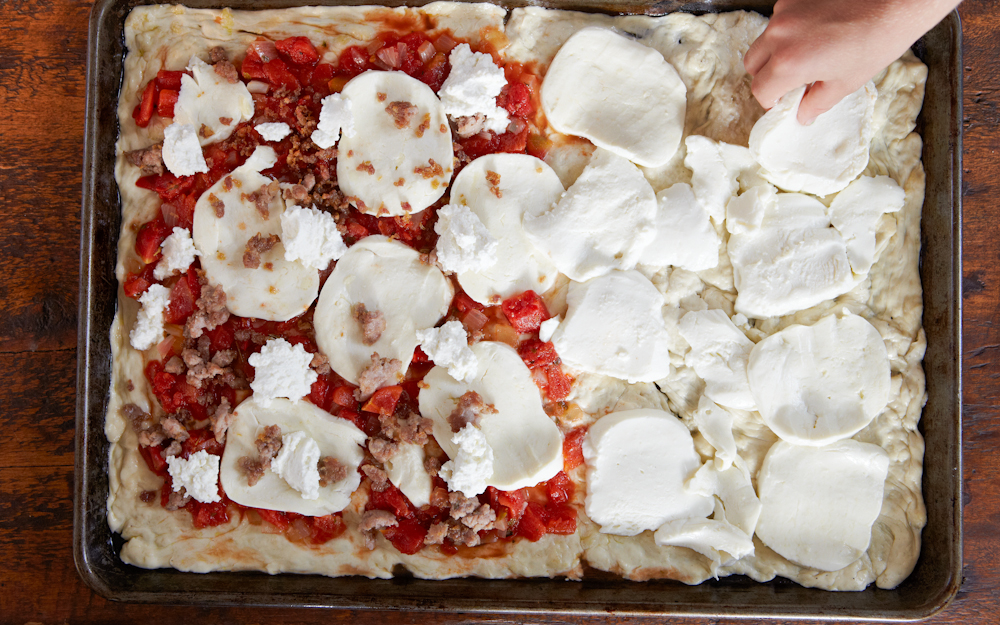

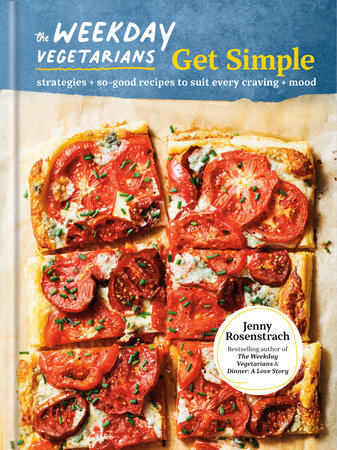
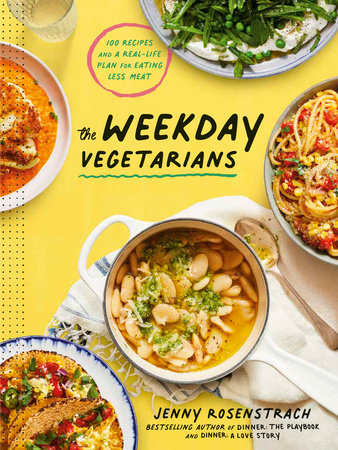
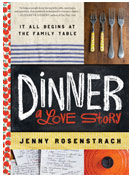
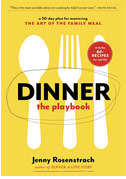


When I was little and we would ask our mom what was for dinner, her standard response was always, “Something delicious.” Never any other details. It drove me nuts at the time, but now I find myself saying the same thing to my husband 🙂
You are just chock full of good suggestions. I’ll need to file this away for future use. So far the only thing our 7 month old won’t eat is avocado….
I’m experimenting with the term “selective eater” (and who *doesn’t* that describe?), because while my daughter has foods she definitely will not eat (potatoes!), there are a wide variety of things she will eat. “Picky” seems to equate, in most people’s heads, with “will only eat four foods.”
But sometimes heart cookie cutters can be great! Case and point: http://www.foreverandarecipe.com/2012/02/be-my-valentine.html . But I totally feel you on the whole “I don’t know yet” front. That works like a charm.
These suggestions simply make sense. I’m going to adopt them right away! We’re forever trying to convince my partner’s daughter to even *try* what we’ve made for dinner, typically without success. The combination of “I don’t know” and the familiar should be a huge help. Thanks Jenny!
Love the idea for saying “I don’t know yet” and will start employing it immediately with my husband!
Great advice. Especially the “i-don’t-know-yet.” I’m filing that away for sure.
I teach my kids to say “I don’t prefer that”. It’s so much easier on the ears than “I don’t like it” or “yuck”.
I just told my grandmother-in-law who we are visiting soon that as long as there is meat of some kind (chicken, beef, lamb, turkey) my kids will be fine. Hoping that works out for my vegetarian sister-in-law who is also visiting!
I find it curious that children are “picky eaters” but adults are completely free to “not care for” tomatoes, mushrooms, seafood, cheese (to name a few)… It also irks me when people suggest that kids are fussy or not well-behaved when they don’t want to do something and are expressing their opinion about it. My sweet daughter gets carted to the grocery store, doctors appointments, etc., and doesn’t get a say in it, so I’m happy to give her time to make decisions too!
Love it all!
Classic, great suggestions. And too true: Who doesn’t love a good Milanese?!
(My favorite idea here is responding to questions about dinner with, “I don’t know yet.” Not only because, as you say, it presents less opportunity for a kid to decide he doesn’t like something he’s never tried before, but also because it asserts some authority: I will decide what’s for dinner, and you should trust what I choose, little sweetness.”)
Awesome post! I hope to be able to read more just like it in the future!
I generally give the “I don’t know yet,” answer, even while stirring said mystery dinner on the stove. Recently, upon being I-don’t-knowed, my five-year-old collapsed on the floor and said, “Whenever you don’t know, it’s something gross!” ;o)
Made the salmon and brussels sprouts last night – it got thumbs up from my five year old. Your blog has inspired some life changing events at our house – thank you so much!
I love “I don’t know yet.” I use it all the time. It’s funny because my entire household knows I make my weekly menu on Sunday. It’s just my way of saying, “I’m not giving you a chance to whine about what I’m cooking.”
Anything Milanese is bound to be yummy, but please no veal…that’s just cruel.
I vote for “C, cocktails, enthusiasm for” staying in the book!
Will add “I don’t know yet” to my list of standard responses. Usually, when my 5 kids ask “What’s for dinner, mom?”, I respond “food”. They say “what kind of food?” and I say “the kind you eat, silly!”
Made waffle sandwiches tonight with tomato soup and it was a huge hit! Thanks for the idea.
Love these tips and am looking forward to the book! Under the “What’s for Dinner?” question, a dad friend of mine always answers “food,” which is a good one. But “I don’t know yet” is more in keeping with my personality!
I also wanted to share that we are just finishing our Kids Month on B4FD and today have a list of great resources for cooking with kids, another time-worn strategy for dealing with “picky eaters.” http://www.blogforfamilydinner.org
Thanks so much for the compilation. The waffle trick for sandwiches has saved me! Also: I am a newsletter subscriber. Do I win the Baked Better Bread Prize?
So the broccoli thing… that counts even if they don’t eat it, yes?!?
Jamie – Totally!!!
I just found your blog today and was browsing for ideas to help me put some more “normal” food on the table…and funny thing is this list was extremely helpful not for my kids, since I don’t have any, but my fiance! If I even mention the name of a dish he’s never heard of before, he refuses to eat it. I admit, I have tricked him in to eating chicken korma by not cubing the chicken, and telling him it’s just chicken with a spiced cream sauce HAHA! These tips will be extremely valuable to me, thanks!